
Bandar Shahpur - World War II - Persian Gulf CommandPhotos By: Eugene Warren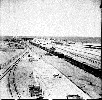
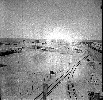
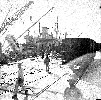
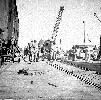
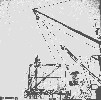
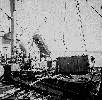 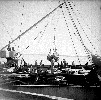
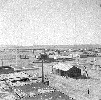
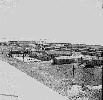
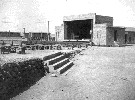
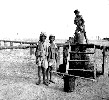
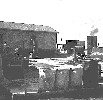
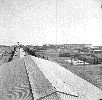
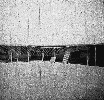

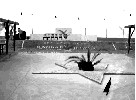

 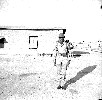
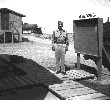
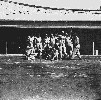
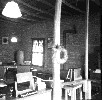
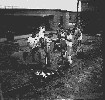
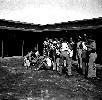

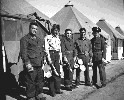

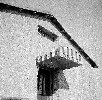

 
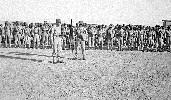
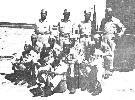

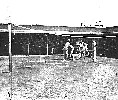 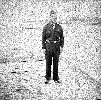

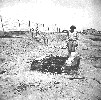
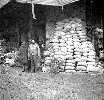
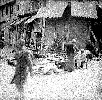

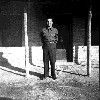
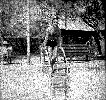
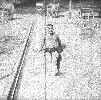
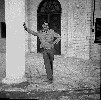
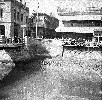
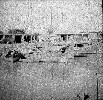
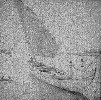

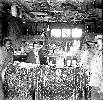
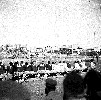 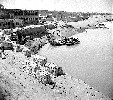
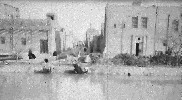
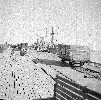
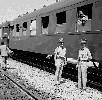
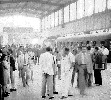 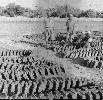
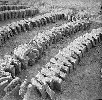
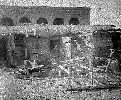
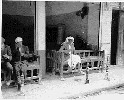
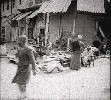
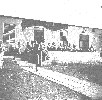
 
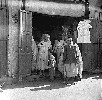

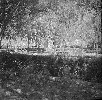 The story of the photos taken in Bandar Shahpur.When we shipped out for Iran we were forbidden to take cameras. After being in Bandar Shahpur a year or so I noticed that some men had cameras although I did not see evidence of photos being taken. Since Bandar Shahpur was only a rail head and not a town there was literally no place to obtain film or have them developed. Not having a camera was accepted. One of the crew members of a ship in dock that was being unloaded wanted some money and had a Kodak Retina II folding camera and was selling the camera. It was a terrific piece of equipment although primitive. After taking a few rolls, I had only five or six, the next question was how to get them developed. For this I had to improvise in my billet. Since I was a Company Commander I had a room of my own and decided that I could do the developing with the chemicals sent to me. I hung blankets over the window, obtained buckets of water and read the instructions on the containers of developer and fixer. From this I was able to get negatives of poor quality but no prints. These negatives sat in the house here in Merrick for many years. They were in a little cardboard box and took up very little space so that I did not throw them away. I had a lovely darkroom in this house and one day I decided to try and get prints from these negatives. The negatvies were curled up and showed signs of deterioration. I devised a holder for them and decided that I would print them in the enlarger in order to get larger prints. The results are pictures, very poor quality, of Bandar Shahpur when I was there.When I was in Bandar it had no roads leading to it, slips for five ships, no civilian presence and was strictly a place to unload the ships and get the cargo on the way to Russia. This was over sixty years ago 1942-1945. Today this place has over sixty slips, can handle ships of 120,000 tons, a population of 60,000 and is one of the largest petrochemical plants in the world. The US Army has undertaken a project of taking aerial photos of places all over the world. On the internet I was able to see an aerial picture of Bandar the way it is today. The photo lacks the detail I would have liked to see. However I can recognize the broad outline of the place in which I worked and lived for over two years. Nothing like it was when I was there. I still do not have anything even close to what I would like to see. Bandar Shahpur was a saucer shaped piece of land that was surrounded by earthen dikes to keep the high tides from flooding the place. The only access was a narrow gauge railroad. There were no roads. The water supply was a single pipe running above ground from a source about thirty miles away. The water was turned on only a short time each day. It was a barren place. The photos will show this. Summer heat of 150 degrees Fahrenheit was normal. When I first arrived as part of a contingent of six persons we did not have the buildings seen in the photos. When the troops arrived we were quartered in tents until the buildings got built. I do not have a record of the tent city. This narrative can continue for many pages. It is written without any preplanning. If I can add descriptive information to the photos maybe this will be continued. Things I can write about include the purpose of our existence, daily life of unloading ships, amusements, medical facilities or lack of, eating, adapting to weather, thoughts while there and some personal changes as the result of my time to read. On the Internet can be found lots of information about the operation. It can be found under various names - Persian Corridor - Persian Gulf Command. Lots statistics and detail. My experience is limited to what I did in Bandar Shahpur and Khorramshahr. These are the two ports into which ships came and brought the materiel that was sent to Russia. I even have a medal given to me by the Russian government. There were two medals given but they ran out of the supply for one before I got it. Considering that I was drafted June 1941, prior to Pearl Harbor and declaration of war, I consider it lucky that I am alive and able to write this. Through no effort and through loads of fortuitous events I was not sent into battle and managed to return to life at home after almost five years of service.  Front Page Front Page |